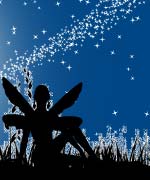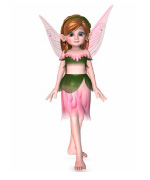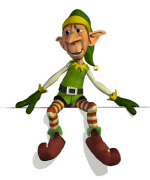Tracey and Cobweb10 years, 2 months ago
There seems to be some confusion about how to attract the Black and Brown bears, so I thought it might be useful to have a brief “how to” guide. This will covers the Bears only, not the bees.
POTS AND HIVES
Differentiating between the pots and the hives seems to be causing some confusion. To clarify: when you attract bees, you start with an empty hive which the bees then fill with honey. This remains a hive until you harvest it, when it becomes a pot full of honey. It is this pot full of honey, which you would otherwise use to plant a Honeyblossom seed into, which you will use to attract the bears. They will not come to a hive at any stage, only to a pot.
One of the things which people seem to have misunderstood about the pots is the term “empty”. This simply means that the pot is empty of a flower, not that it is empty of honey. The pot is always full of honey until the bear takes it and replaces it with a new, empty, hive. You can see which bees made up the hive (and therefore what colour the honey is) by hovering your mouse over the pot – in storage, the colour of the bees shows up automatically but in your garden you will need to hover your mouse over the pot, then click the [Show] link which you can see after the heading Honey Made By.
To attract the bears, your pots need to have been made from hives which were filled by a single colour of bee. The rarer Brown Bear will only take honey from a pot which was filled by either all-indigo or all-violet bees, whilst the Black Bear will take honey from a pot which was filled by any single colour of bee, INCLUDING THE INDIGO AND VIOLET.
SETTING UP
The Wildlife Guide tells you what you need in your garden to attract the bears: as well as your completed, empty, pot you will also need a fully grown Cumulus Albiflorus planted, and veggies on your feeding tables. The bears can take veggies from either feeding table, but high tables are usually best because they eliminate the White and Pygmy mice. If you are using a Supershroom, it doesn’t matter which table you use because the only competition comes from the Caterpillars which can also use any table.
IMPORTANT: WHEN THE BEAR IS SPOTTED, IT TAKES ALL OF THE HONEY AS WELL AS THE HONEY POT. After the bear is spotted you will be left with an empty hive, which you can either store as a hive or fill with honey again to give you a new pot. If you only have one or two pots, you may wish to complete some more before you start to attract the bears.
PROTECTING AN INDIGO OR VIOLET POT FROM BLACK BEARS
When the bear is spotted, it will take the honey from the furthest pot to the left which it is able to take it from. To protect an indigo or violet pot from being taken by a Black Bear, keep the indigo/violet pot to the RIGHT of a pot which is made by all-red, all-orange, all-yellow, all-green or all-blue bees. That way, if a Black Bear comes it cannot take the indigo/violet pot and so will take the lower colour of pot, leaving the indigo or violet pot in your garden to use again.
If you have twin bears, however, EACH WILL TAKE ONE POT so you may wish to use two of the lower-coloured pots (again, kept to the left of the higher coloured pot) as well as one indigo or violet pot.
TWIN BEARS, AND STORING POTS TO USE AGAIN
Another way to get twin (or even triplet!) bears is to store the pots after the bears have had time to be programmed onto the plate, but before they have been spotted. It can be tricky to do but if you are able to do this, it will not only mean that you have a better chance of twins but it will also mean that your pots will not be taken by the bears and can be used again.
You may have tried this with the Crows by storing the Scarecrow before the face is carved. If not, then here’s how you do it.
Because the bears are long-stayers, they can be programmed in very early. But if you let the bear be spotted too early, the chances are there won't have been time for twins/triplets to be programmed. If you can babysit your garden, ask your visitors not to water for the first 55 - 60 minutes that the food is out - that seems to be enough time to get all three plates programmed. Once the time is up, you can send your pots to storage (because once the bears are programmed in, they will come regardless of whether the pots are still in the garden) and when the bears come, they won't take the honey and you can re-use the pots.
The twins/triplets aren't necessarily the same colour, by the way - you can get both brown and black bears programmed in at the same time.
POTS AND HIVES
Differentiating between the pots and the hives seems to be causing some confusion. To clarify: when you attract bees, you start with an empty hive which the bees then fill with honey. This remains a hive until you harvest it, when it becomes a pot full of honey. It is this pot full of honey, which you would otherwise use to plant a Honeyblossom seed into, which you will use to attract the bears. They will not come to a hive at any stage, only to a pot.
One of the things which people seem to have misunderstood about the pots is the term “empty”. This simply means that the pot is empty of a flower, not that it is empty of honey. The pot is always full of honey until the bear takes it and replaces it with a new, empty, hive. You can see which bees made up the hive (and therefore what colour the honey is) by hovering your mouse over the pot – in storage, the colour of the bees shows up automatically but in your garden you will need to hover your mouse over the pot, then click the [Show] link which you can see after the heading Honey Made By.
To attract the bears, your pots need to have been made from hives which were filled by a single colour of bee. The rarer Brown Bear will only take honey from a pot which was filled by either all-indigo or all-violet bees, whilst the Black Bear will take honey from a pot which was filled by any single colour of bee, INCLUDING THE INDIGO AND VIOLET.
SETTING UP
The Wildlife Guide tells you what you need in your garden to attract the bears: as well as your completed, empty, pot you will also need a fully grown Cumulus Albiflorus planted, and veggies on your feeding tables. The bears can take veggies from either feeding table, but high tables are usually best because they eliminate the White and Pygmy mice. If you are using a Supershroom, it doesn’t matter which table you use because the only competition comes from the Caterpillars which can also use any table.
IMPORTANT: WHEN THE BEAR IS SPOTTED, IT TAKES ALL OF THE HONEY AS WELL AS THE HONEY POT. After the bear is spotted you will be left with an empty hive, which you can either store as a hive or fill with honey again to give you a new pot. If you only have one or two pots, you may wish to complete some more before you start to attract the bears.
PROTECTING AN INDIGO OR VIOLET POT FROM BLACK BEARS
When the bear is spotted, it will take the honey from the furthest pot to the left which it is able to take it from. To protect an indigo or violet pot from being taken by a Black Bear, keep the indigo/violet pot to the RIGHT of a pot which is made by all-red, all-orange, all-yellow, all-green or all-blue bees. That way, if a Black Bear comes it cannot take the indigo/violet pot and so will take the lower colour of pot, leaving the indigo or violet pot in your garden to use again.
If you have twin bears, however, EACH WILL TAKE ONE POT so you may wish to use two of the lower-coloured pots (again, kept to the left of the higher coloured pot) as well as one indigo or violet pot.
TWIN BEARS, AND STORING POTS TO USE AGAIN
Another way to get twin (or even triplet!) bears is to store the pots after the bears have had time to be programmed onto the plate, but before they have been spotted. It can be tricky to do but if you are able to do this, it will not only mean that you have a better chance of twins but it will also mean that your pots will not be taken by the bears and can be used again.
You may have tried this with the Crows by storing the Scarecrow before the face is carved. If not, then here’s how you do it.
Because the bears are long-stayers, they can be programmed in very early. But if you let the bear be spotted too early, the chances are there won't have been time for twins/triplets to be programmed. If you can babysit your garden, ask your visitors not to water for the first 55 - 60 minutes that the food is out - that seems to be enough time to get all three plates programmed. Once the time is up, you can send your pots to storage (because once the bears are programmed in, they will come regardless of whether the pots are still in the garden) and when the bears come, they won't take the honey and you can re-use the pots.
The twins/triplets aren't necessarily the same colour, by the way - you can get both brown and black bears programmed in at the same time.








